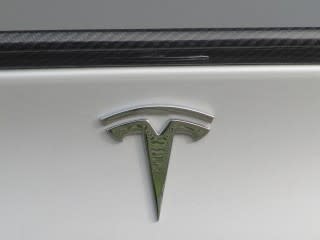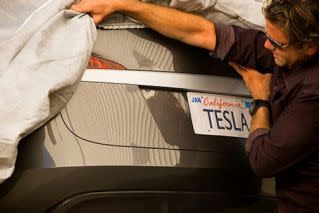Tesla Model 3: speculating on versions, batteries, prices, power

The Tesla Model 3 that will be unveiled next Thursday evening may be the most anticipated and significant electric car of recent years.
Scheduled to hit the market in late 2017 with a price tag of $35,000 before incentives and a range of 200 miles or more, the Model 3 aims to be the first true mass-market electric car.
Its sales are targeted at 500,000 per year by 2020—fully 10 times the production rate of the $75,000-and-up Tesla Model S.
DON'T MISS: Where Can Tesla Legally Sell Cars Directly To You? State-By-State Map
Tesla and partners will ultimately invest $5 billion in a “gigafactory” to build lithium-ion cells and batteries for the Model 3, and billions more to develop and produce the car.
Its success (or lack thereof) will almost certainly make or break Tesla as a car company.
[EDITOR'S NOTE: We originally published this article in June 2015. With the unveiling of the Model 3 imminent—though how much detail we'll get isn't clear—it seemed useful to republish it for discussion before the launch. That said, we have no more information now about Model 3 details than we did then, and the article represents surmise and educated guesses rather than any inside information.]
But for all the hype surrounding the Model 3, virtually nothing is known about the technical details of the car.
Tesla is playing it close to the vest, and says only that it will unveil a Model 3 concept car sometime next year.

But that hasn’t prevented a flood of speculation about the Model 3, including a number of photorealistic renderings--based almost entirely on their creators’ fevered imaginations.
Speculation worth reading
But a recent article about the Tesla Model 3 on the stock-market website Seeking Alpha caught our eye.
Unlike much other Model 3 speculation, it seems to be a thoughtful design analysis based on a reasonable understanding of car batteries and automotive design.
ALSO SEE: Kitten Rescued From Tesla Model S Electric Car Motor: Video
And the report reaches some interesting conclusions.
Author Randy Carlson predicts three versions of the Model 3.

344: Entry-level, single-motor, rear-wheel drive version, with a base price of $35,000, EPA range of 220 miles from a 44-kWh battery, and 0-to-60-mph time of 5.6 seconds
366D: Dual-motor AWD standard version with an EPA range of 320 miles from a 66-kWh battery. 0-60 time 4.7 seconds, price $44,000
P366D: 340-hp performance version with dual motors, AWD, a 300-mile EPA range, and 0-to-60 time of 3.1 seconds; priced with leather and a luxury interior at $60,000
Size
Elon Musk has said the Model 3 will be about 80 percent of the size of the current Model S.
If “size” is interpreted to mean volume (length x width x height), then the Model 3 will be almost exactly the same size as the current BMW 3 series, says Carlson.
But because of its smaller motor(s) and flexible battery placement, the Model 3 can have a longer wheelbase. This, in turn, will allow a larger cabin and bigger wheels.
MORE: History Of Tesla And Its Electric Cars, In Only 2 Minutes Of Video
Carlson predicts the Model 3 will weigh 3150 to 3600 pounds, depending on the model.
Battery
Key to the Model 3’s performance and price, of course, is its battery.
Carlson bases his analysis on assumed improvements in the battery pack.
![Tesla Model S lithium-ion battery pack in rolling chassis [photo: Martin Gillet via Flickr]](https://s.yimg.com/ny/api/res/1.2/MEUe5bNOebe72Q99h.FIHg--/YXBwaWQ9aGlnaGxhbmRlcjt3PTY0MDtoPTQyNA--/https://s.yimg.com/os/en_US/Autos/GreenCarReports/tesla-model-s-lithium-ion-battery-pack-in-rolling-chassis-photo-martin-gillet-via-flickr_100481091_s.jpg)
Slightly larger cells—20 mm x 70 mm, instead of Tesla’s current 18 mm x 65 mm—optimize pack assembly and cooling. Improved battery chemistry, Carlson assumes.
He also suggests that Tesla and its cell partner Panasonic will use a silicon-graphene anode in place of the current cell’s graphite anode.

 Yahoo Autos
Yahoo Autos 
